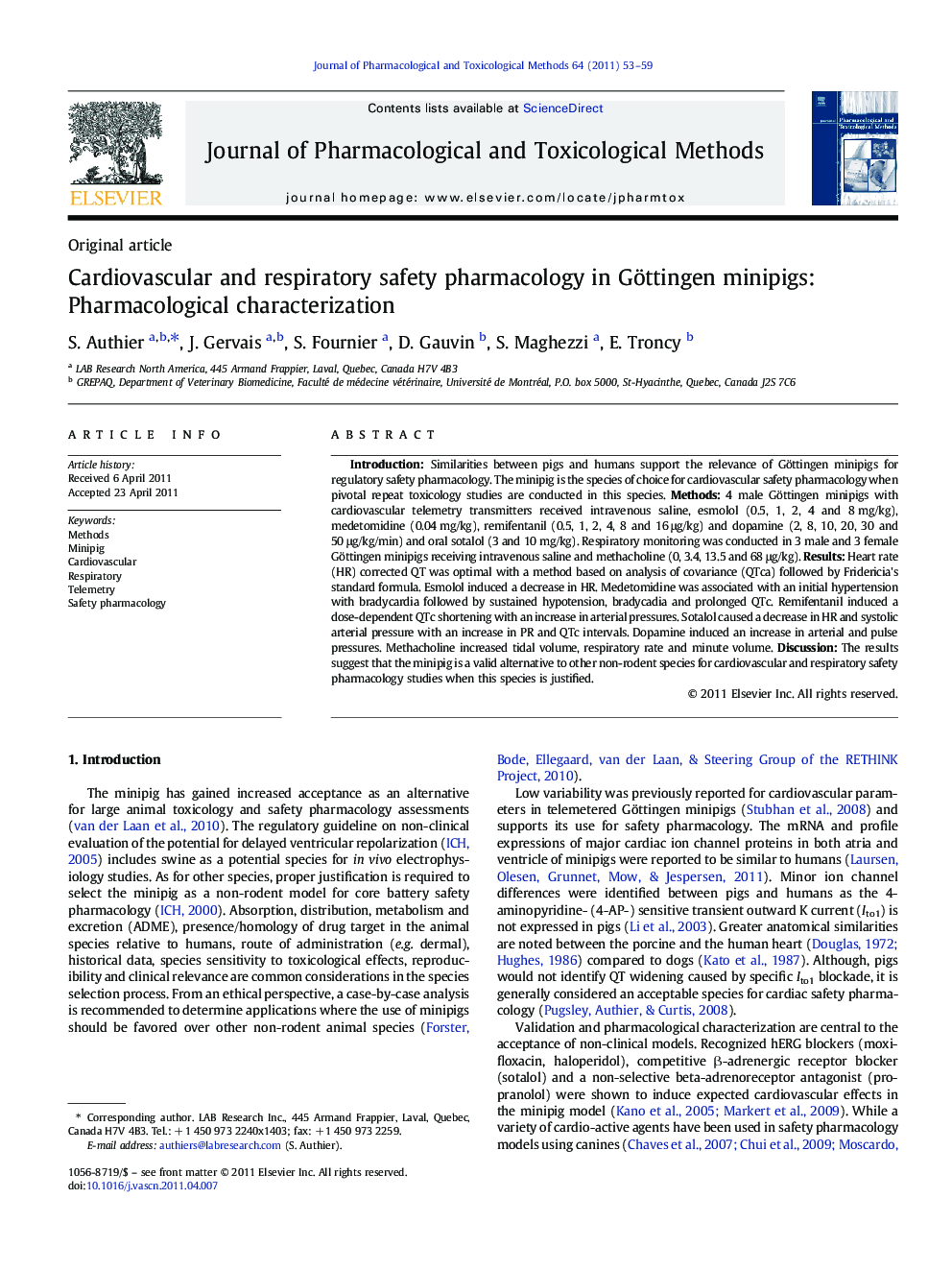| Article ID | Journal | Published Year | Pages | File Type |
|---|---|---|---|---|
| 2549556 | Journal of Pharmacological and Toxicological Methods | 2011 | 7 Pages |
IntroductionSimilarities between pigs and humans support the relevance of Göttingen minipigs for regulatory safety pharmacology. The minipig is the species of choice for cardiovascular safety pharmacology when pivotal repeat toxicology studies are conducted in this species.Methods4 male Göttingen minipigs with cardiovascular telemetry transmitters received intravenous saline, esmolol (0.5, 1, 2, 4 and 8 mg/kg), medetomidine (0.04 mg/kg), remifentanil (0.5, 1, 2, 4, 8 and 16 μg/kg) and dopamine (2, 8, 10, 20, 30 and 50 μg/kg/min) and oral sotalol (3 and 10 mg/kg). Respiratory monitoring was conducted in 3 male and 3 female Göttingen minipigs receiving intravenous saline and methacholine (0, 3.4, 13.5 and 68 μg/kg).ResultsHeart rate (HR) corrected QT was optimal with a method based on analysis of covariance (QTca) followed by Fridericia's standard formula. Esmolol induced a decrease in HR. Medetomidine was associated with an initial hypertension with bradycardia followed by sustained hypotension, bradycadia and prolonged QTc. Remifentanil induced a dose-dependent QTc shortening with an increase in arterial pressures. Sotalol caused a decrease in HR and systolic arterial pressure with an increase in PR and QTc intervals. Dopamine induced an increase in arterial and pulse pressures. Methacholine increased tidal volume, respiratory rate and minute volume.DiscussionThe results suggest that the minipig is a valid alternative to other non-rodent species for cardiovascular and respiratory safety pharmacology studies when this species is justified.
